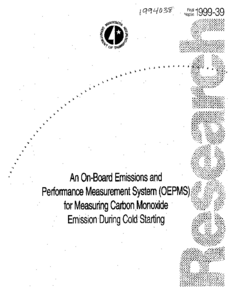An On-Board Emissions and Performance Measurement System (OEPMS) for Measuring Carbon Monoxide Emission During Cold Starting
Creator
Date Created
1999-05
Report Number
1999-39
Description










